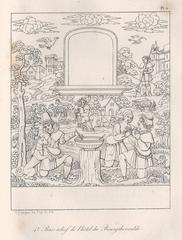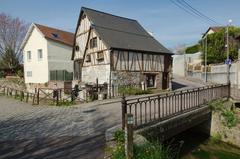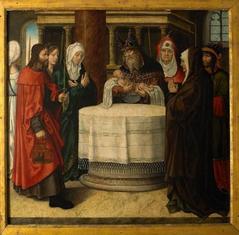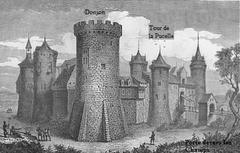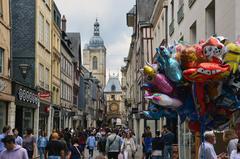
Gothic House Rouen: Visiting Hours, Tickets, and Historical Sites Guide
Date: 03/07/2025
Introduction
Rouen, the historic capital of Normandy, is famed for its well-preserved medieval architecture, with its distinctive Gothic Houses—known as “Maisons Gothiques”—standing out as some of the city’s most captivating attractions. These timber-framed masterpieces, dating primarily from the 15th to 17th centuries, offer a window into Rouen’s prosperous past as a cultural and commercial hub. Nestled along the iconic Rue du Gros-Horloge and throughout the pedestrianized old town, these houses enchant visitors with their intricate woodwork, overhanging upper stories, and decorative motifs that blend Gothic and Renaissance styles. For history enthusiasts, architecture lovers, and cultural travelers alike, understanding the visiting hours, ticketing options, accessibility, and nearby attractions of Rouen’s Gothic Houses is essential for an enriching experience. This comprehensive guide provides all the practical information and expert tips you need to explore Rouen’s Gothic heritage to the fullest (Tourist Platform, Normandie Lovers, Overyourplace).
Table of Contents
- Introduction
- Historical Background of the Gothic Houses in Rouen
- Architectural Features and Notable Examples
- Visitor Information: Hours, Tickets, and Tours
- Walking Tours and Nearby Attractions
- Accessibility and Visitor Services
- Events, Photography, and Cultural Activities
- Accommodation Options Near the Gothic House
- Practical Tips and Sustainability
- Frequently Asked Questions (FAQ)
- Conclusion and Call to Action
- References and Further Reading
Historical Background of the Gothic Houses in Rouen
Rouen’s Gothic Houses are emblematic of the city’s medieval prosperity and resilience. Built between the 15th and 17th centuries, these structures reflect the wealth of merchants and artisans who shaped Rouen’s urban landscape. Their strategic location along the Seine enabled thriving trade and the construction of grand homes, often in response to limited urban space, resulting in narrow, tall facades with overhanging upper floors. Many Gothic Houses survived significant events such as the Hundred Years’ War, the Wars of Religion, and World War II bombings, following meticulous restoration efforts (The Modern Postcard, French Moments). Today, over 2,000 half-timbered houses remain, with a significant number protected as historical monuments.
Architectural Features and Notable Examples
Key Architectural Elements
- Timber-Framed Construction (Colombage): Exposed wooden skeletons filled with wattle and daub, brick, or stone, often painted in contrasting hues and adorned with carved motifs such as foliage, animals, and religious symbols (Solosophie).
- Overhanging Upper Stories (Encorbellement): Designed to maximize living space while minimizing the ground-level footprint, creating the picturesque, narrow streets characteristic of medieval Rouen.
- Decorative Details: Ornate window frames, carved brackets, sculpted doorways, and interior elements like grand staircases and high ceilings showcase the craftsmanship and status of original owners.
Notable Gothic Houses
- Maison de la Fontaine: A 16th-century house renowned for its harmonious architecture and preserved interiors, now operating as a museum.
- Maison des Quatrans: One of Rouen’s oldest houses, dating from the 15th century, featuring Gothic elements and serving as a local history museum.
- Maison Sublime: Considered the oldest Jewish monument in France, dating back to the 12th century and illustrating Rouen’s deep historical layers (Explorial).
- Maison du Gros-Horloge: A striking example of a grand merchant’s home located near the iconic clock tower.
Visitor Information: Hours, Tickets, and Tours
Opening Hours
- Maison de la Fontaine: Tuesday–Sunday, 10:00 AM–6:00 PM; closed Mondays and public holidays.
- Maison des Quatrans: Wednesday–Sunday, 10:00 AM–5:30 PM.
- General Gothic House Visits: Most houses can be admired from the exterior at any time. Museums and interiors follow specific schedules; check official websites for updates.
Ticket Prices
- Maison de la Fontaine: ~€7 for adults; reduced rates for seniors and students; free for children under 12.
- Maison des Quatrans: ~€5 for adults; similar concessions; combined tickets for multiple sites may be available.
- Other Museums: Some, like Musée des Antiquités or Musée de la Céramique, are free for permanent collections, while special exhibitions may require tickets (Normandie Lovers).
Guided Tours
Guided walking tours by the Rouen Tourism Office and local agencies provide in-depth historical and architectural insights, typically lasting 1.5 to 2 hours. Tours are available in French and English, with prices ranging from €10–€20. Booking in advance is recommended, especially during peak seasons (Normandie Lovers, Waypoint Wonder).
Walking Tours and Nearby Attractions
Exploring Rouen’s Gothic Houses is best done on foot through the pedestrianized old town. Key streets include Rue du Gros-Horloge, Rue Saint-Romain, Rue Damiette, and Rue Étoupée, each lined with colorful timber-framed buildings (Solosophie, The Crazy Tourist). Nearby attractions that complement your visit:
- Rouen Cathedral: A Gothic masterpiece painted by Monet.
- Gros Horloge: A 14th-century astronomical clock and city symbol.
- Musée des Beaux-Arts: Renowned for its collections, including works by Monet and Caravaggio.
- Place du Vieux-Marché: The historic square where Joan of Arc was executed (passportsandpreemies.com).
Accessibility and Visitor Services
Access and Transportation
- Rouen’s historic center is largely pedestrianized and accessible by foot from the Rouen Rive Droite train station (about a 15-minute walk).
- Public transportation: Buses and the Astuce network’s TEOR lines provide accessible stops nearby (Normandie Lovers).
- Parking: Public garages offer accessible spaces, though availability may be limited during peak times.
Accessibility for Visitors with Reduced Mobility
- Exterior Routes: Main pedestrian streets like Rue du Gros-Horloge are generally wheelchair- and stroller-friendly (Accessible places for PRM in Rouen).
- Interiors: Many Gothic Houses feature narrow stairs and uneven floors. Some museums have added ramps or lifts; contact venues in advance for details.
- Facilities: Accessible public restrooms are available within the historic quarter and at main transport hubs.
- Guided tours adapted for visitors with mobility needs can often be arranged.
Events, Photography, and Cultural Activities
Photography
The Gothic Houses offer excellent photo opportunities, especially during golden hours when the light accentuates the timber frames and decorative details. Flash photography and tripods may be restricted inside museums; always check site-specific policies (Solosophie).
Events and Special Exhibitions
Temporary exhibitions, workshops, and cultural events focusing on medieval life and Gothic art are periodically held in and around the Gothic House. Citywide festivals, such as the Joan of Arc Festival (May) and Fête du Ventre (October), enliven the area with performances and historical reenactments (overyourplace.com, Visite Rouen).
Accommodation Options Near the Gothic House
Luxury
- Hôtel de Bourgtheroulde, Autograph Collection: Historic mansion with accessible rooms, spa, and prime location (Hotel de Bourgtheroulde).
- Chambres d’Hôtes La Maison: Boutique guesthouse with elegant rooms (Chambres d’Hôtes La Maison).
Mid-Range and Budget
- Hotel Mercure Rouen Centre Cathédrale: Modern amenities in a historic setting (Hotel Mercure Rouen Centre Cathédrale).
- Le Vieux Carré: Cozy timber-framed hotel with a garden (Le Vieux Carré).
- Hôtel de la Cathédrale: Affordable half-timbered hotel (Hôtel de la Cathédrale).
- Apartments: Options like “Le Bourdon de la Cathédrale” and “L’Escale du Gros Horloge” (Rouen Apartments).
- Camping: Marina-based camping for budget travelers.
Practical Tips and Sustainability
- Best Time to Visit: July offers pleasant weather but is peak tourist season; visit early or late in the day for a quieter experience (wanderlog.com).
- Dress: Comfortable shoes for cobblestones and layers for changing weather.
- Tickets: Buy online in advance during busy periods.
- Local Cuisine: Try specialties like canard à la rouennaise and apple desserts at historic brasseries.
- Sustainability: Walk or use public transport, stay in eco-certified accommodations (Normandy Tourism).
- Etiquette: Respect heritage sites, avoid touching woodwork, and maintain a quiet atmosphere.
Frequently Asked Questions (FAQ)
Q: What are the Gothic House Rouen visiting hours?
A: Most museums and interiors open Tuesday–Sunday, 10:00 AM–6:00 PM; closed Mondays and some holidays.
Q: How much do tickets cost?
A: Typically under €10 for adults, with discounts for students, seniors, and children.
Q: Can I book guided tours in English?
A: Yes, guided tours are available in French and English; advance booking is recommended.
Q: Is the Gothic House accessible for visitors with disabilities?
A: Some adaptations exist, but historic architecture means not all areas are accessible; contact the venue ahead for details.
Q: Are there nearby attractions worth visiting?
A: Yes—Rouen Cathedral, Gros Horloge, Musée des Beaux-Arts, and Place du Vieux-Marché are all within walking distance.
Conclusion and Call to Action
Exploring the Gothic Houses in Rouen is a journey into Normandy’s medieval splendor, offering insights into the city’s vibrant history, architecture, and culture. With practical knowledge of opening hours, ticketing, tours, accessibility, and nearby attractions, you can fully immerse yourself in Rouen’s enchanting atmosphere. For up-to-date information, special events, and self-guided audio tours, download the Audiala app and follow our social media channels. Plan your visit, support sustainable tourism, and experience the enduring legacy of Rouen’s Gothic heritage!
For further details and to plan your visit, consult the Rouen tourism website or stop by the main tourist information center near the cathedral (overyourplace.com).

